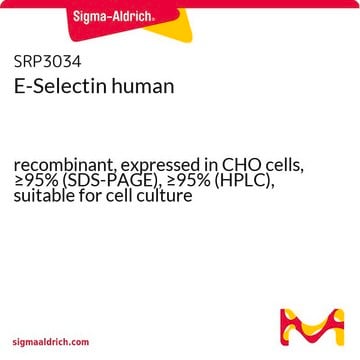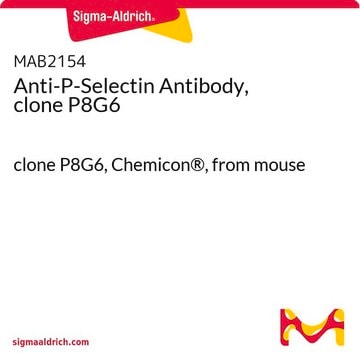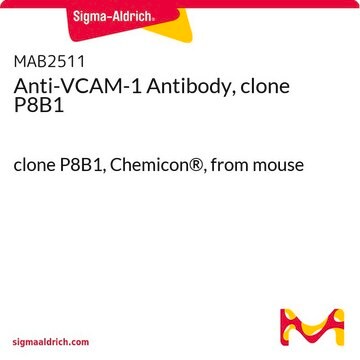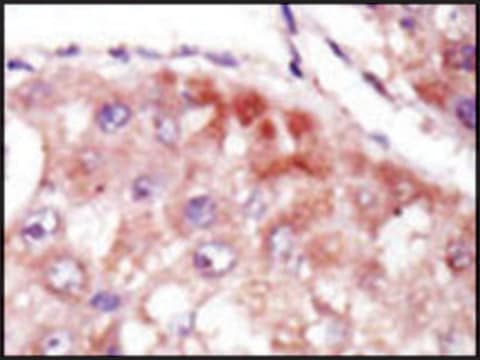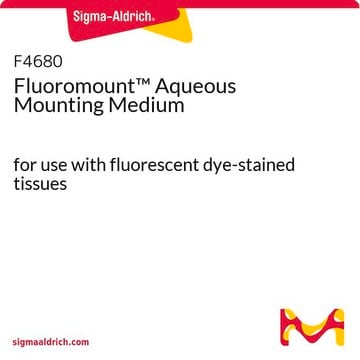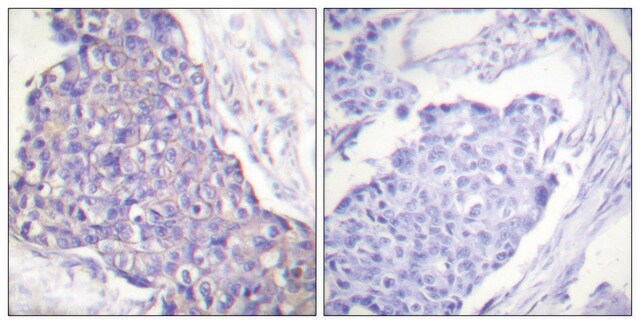S9555
Anti-E-Selectin (CD62E) antibody, Mouse monoclonal
clone 1.2B6, purified from hybridoma cell culture
Sinônimo(s):
Monoclonal Anti-CD62E, Anti-E-Selectin, Anti-ELAM-1
Selecione um tamanho
Selecione um tamanho
About This Item
Produtos recomendados
fonte biológica
mouse
conjugado
unconjugated
forma do anticorpo
purified immunoglobulin
tipo de produto de anticorpo
primary antibodies
clone
1.2B6, monoclonal
Formulário
buffered aqueous solution
peso molecular
antigen 100-115 kDa
reatividade de espécies
human, pig
concentração
~2 mg/mL
técnica(s)
capture ELISA: suitable
flow cytometry: suitable
immunohistochemistry (frozen sections): suitable
immunoprecipitation (IP): suitable
indirect ELISA: suitable
indirect immunofluorescence: 1-2 μg/mL using using 293-T cells transfected with E-selectin fusion protein
western blot: suitable (non-reduced)
Isotipo
IgG1
nº de adesão UniProt
Condições de expedição
dry ice
temperatura de armazenamento
−20°C
modificação pós-traducional do alvo
unmodified
Informações sobre genes
human ... SELE(6401)
Procurando produtos similares? Visita Guia de comparação de produtos
Categorias relacionadas
Descrição geral
It is a 140KDa protein mainly expressed in endothelial cells. E- selectin is characterized with an N-terminal domain, epidermal growth factor (EGF)-like domain, lectin (ligand-binding) domain, variable short consensus repeats and transmembrane domain.
Especificidade
Imunogênio
Aplicação
Ações bioquímicas/fisiológicas
Descrição-alvo
forma física
Armazenamento e estabilidade
Exoneração de responsabilidade
Não está encontrando o produto certo?
Experimente o nosso Ferramenta de seleção de produtos.
Código de classe de armazenamento
10 - Combustible liquids
Classe de risco de água (WGK)
WGK 3
Ponto de fulgor (°F)
Not applicable
Ponto de fulgor (°C)
Not applicable
Escolha uma das versões mais recentes:
Certificados de análise (COA)
Não está vendo a versão correta?
Se precisar de uma versão específica, você pode procurar um certificado específico pelo número do lote ou da remessa.
Já possui este produto?
Encontre a documentação dos produtos que você adquiriu recentemente na biblioteca de documentos.
Active Filters
Nossa equipe de cientistas tem experiência em todas as áreas de pesquisa, incluindo Life Sciences, ciência de materiais, síntese química, cromatografia, química analítica e muitas outras.
Entre em contato com a assistência técnica![Anti-CD62E [ELAM-1] Antibody, clone 1.2B6 clone 1.2B6, from mouse](/deepweb/assets/sigmaaldrich/product/images/224/939/8a711839-25ef-4e45-badd-208503950c8a/640/8a711839-25ef-4e45-badd-208503950c8a.jpg)
